Why Wrist Size Matters: Finding Proportion and Comfort
Choosing a watch for a small wrist is about more than fashion—it’s about proportion and comfort. The right size makes a watch look intentional, not oversized, and keeps daily wear pleasant.
This guide explains case diameter, lug-to-lug length, case thickness, and strap fit so you can decode specs with confidence. You’ll learn design features that flatter small wrists, ideal case shapes, and material and strap tips for comfort.
Finally, practical buying advice covers budgets and real-world picks to help you buy a watch you’ll love and wear often. Start shopping smart today.
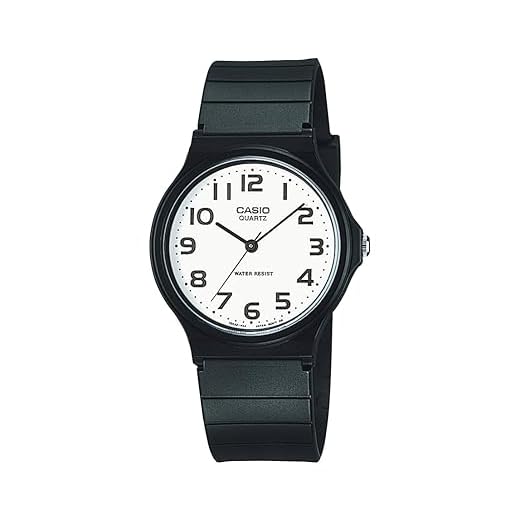
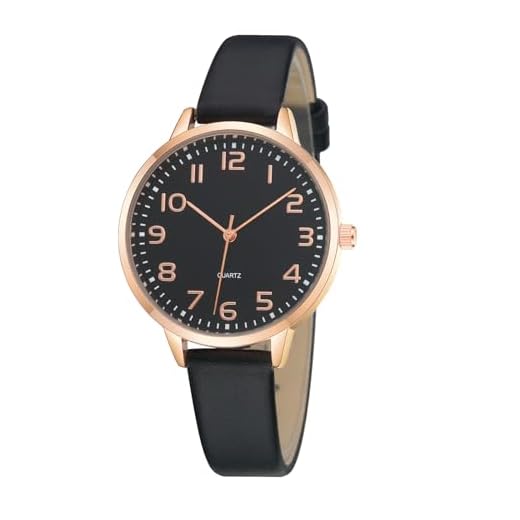
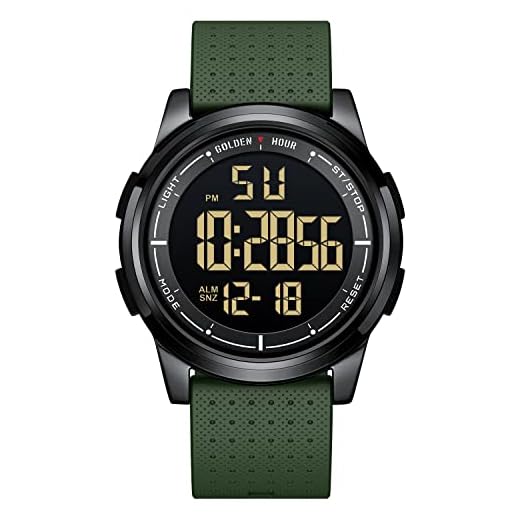

Measuring Your Wrist and Decoding Watch Dimensions
How to measure your wrist — step by step
- Wrap a soft tailor’s measuring tape around the wrist bone (just below the hand). Read the circumference where the tape meets.
- No tape? Use a strip of paper or string, mark where it overlaps, then measure that mark against a ruler.
- Decide fit preference: snug (one finger should slide under the band) or loose (two fingers). Mark the preferred circumference — this is the hole/length you’ll aim for on a strap.
Real-life tip: I measured 6″ (15.2 cm) and found a snug fit most comfortable for daily work; a loose fit slid uncomfortably while typing.
Key measurements and what they mean
Example models: Seiko 5 SNK809 (≈37 mm, L2L ~43 mm) wears smaller than its diameter suggests; Nomos Tangente 35 (35 mm, L2L ~43 mm) is a classic small-wrist-friendly shape.
Specs vs. real-world fit
Manufacturer specs are a starting point. Pay attention to lug-to-lug and lug curvature photos. Short, downward-curving lugs (“drop lugs”) hug the wrist; straight, long lugs will overhang even if diameter looks modest. Also check crown size and case edges — big crowns or thick bezel profiles can change perceived scale.
Simple decision flow (quick rules)
Try-before-you-buy tips
Next up: design choices that visually flatter smaller wrists.
Design Features That Flatter Small Wrists
Case diameter vs. lug-to-lug and shape
Diameter is a headline number, but lug-to-lug and case shape control fit. A 38–40 mm round watch can sit comfortably on a 6″ wrist if the lugs are short and curve down; conversely, a 36 mm watch with long, straight lugs will overhang. Think of diameter as “face size” and L2L as “how it wears.” Rectangular or tonneau cases (Cartier Tank, small Nomos models) often read smaller on the wrist because their shape follows the arm.
Slim cases, narrow bezels, and small crowns
Slim, low-profile cases slip under cuffs and feel less top-heavy. Narrow bezels increase apparent dial size without adding bulk, while wide, chunky bezels make watches feel larger.
I once tried a 40 mm diver that “disappeared” because its 12 mm thickness and long lugs made it read huge—same diameter, completely different presence.
Dial design: markers, hands, and color
Dial layout dramatically alters perceived size.
Example: Junghans Max Bill’s sparse dial reads slimmer than a busy chronograph of the same diameter.
Bracelets vs. straps and color contrast
Bracelets add visual and physical weight. Flat, tightly scaled bracelets with smaller links can work, but chunky metal bracelets tend to overwhelm a narrow wrist. Leather, suede or nylon straps tapering from 18 mm to 16 mm visually slim the watch.
Quick checklist: choose short/drop lugs, thin case, narrow bezel, restrained dial, small crown, and a slim strap that either matches the dial or gently tapers. These small design choices add up to a far more balanced look on smaller wrists.
Styles and Case Shapes That Work Best
Dress and field watches: timeless, wearable choices
Dress watches and classic field pieces are naturally friendly to smaller wrists because they emphasize slim profiles and simple dials. Think restrained designs — thin bezels, modest diameters and uncluttered faces — that read elegant rather than bulky. Real-world pick: a 36–38 mm Hamilton Khaki Field or a small Nomos model will tuck under a shirt cuff and look deliberate, not apologetic.
Small-case divers and sporty watches
Sport watches can work if they’re scaled or simplified. Look for models labeled “mid-size” or 36–40 mm and those with minimal rotating bezel thickness. Swapping a bulky metal bracelet for a leather or NATO strap instantly reduces perceived weight and adds comfort.
Tip: some dive watches (even larger ones) read smaller on the wrist when paired with a thin strap and matte dial — useful if you love the dive aesthetic but not the heft.
Case shape comparisons: round, cushion, tonneau, rectangular
Practical note: a rectangular Tank or slim tonneau often looks more intentional on narrow wrists than a wide round sports watch of the same diameter.
Complications and subdials: what adds bulk (and what doesn’t)
Complications increase visual complexity and sometimes thickness. Avoid large, stacked chronographs or multi-level calendars if your priority is low-profile wear.
Choose complications that fit the dial without crowding; a single subtle subdial can add character without adding “wrist presence.”
Adapting sporty designs vs. going minimalist
If you love pilots’ or divers’ looks, opt for scaled-down versions or pared-back dials (no oversized markers or broad crowns). When in doubt, minimalism wins for versatility: one slim, neutral watch will serve daily wear far better than a single oversized statement piece. This is useful when you need a watch that transitions from errands to evening in one swap-free step.
Materials, Straps and Comfort: Practical Wearability Tips
Small-wrist comfort often comes down to weight distribution and adaptability. A watch that’s light where it counts and adjustable where you need it will feel like it was made for you. Below are practical, real-world pointers to make long-term wear enjoyable.
Materials: weight vs. durability
Real-world note: swapping a steel bracelet for a leather or nylon strap often reduces perceived weight more than changing case material.
Strap systems: pros, cons and when to use them
Adjustability: micro-adjusts, clasps and link removal
Caseback, tapering and balance
Maintenance for long-term comfort
Small adjustments—half-links, a quick-release strap swap, or a curved caseback—transform a watch from “tolerable” to “effortless” on a small wrist.
Choosing the Right Watch: Budget, Use Case and Practical Recommendations
Start with your use case
Decide what you’ll actually do with the watch. Daily office wear, weekend casual, formal events, or active sports each demand different features: slim profile and simple dial for dress, robust water resistance and luminous markers for sport, versatile field styling for day-to-day. Picture a typical week — that simple mental run-through narrows choices fast.
Translate measurement into size constraints
Use your wrist circumference and preferred lug-to-lug comfort zone to set hard limits. If your lug-to-lug comfort is ~48 mm, treat that as a maximum; case diameter can then be 34–38 mm for dress/office, 36–40 mm for casual/field, up to 40 mm for sporty pieces if lug-to-lug stays short. A quick rule: prioritize lug-to-lug and thickness over diameter.
Pick materials, straps and features to prioritize
Choose materials and straps that match your use case: lighter metals (titanium, aluminum) or resin for active use; leather or thin bracelets for dress. Prioritize features by need:
Camping trips are easier with a reliable field watch like the Timex Expedition Scout 40mm Field Watch with Indiglo.
Budget tiers — suggested sizes, styles and acceptable compromises
Smart online shopping tips
Quick evaluation checklist
With this process you’ll quickly move from overwhelm to a confident shortlist — next, narrow to the piece that fits your lifestyle.
Finding a Watch That Fits Your Wrist and Lifestyle
Good fit is about proportion and comfort more than brand or price. Measure your wrist, prioritize case diameter, lug-to-lug, thickness and strap choice, and use the checklist from this guide. Try watches on when possible and assess visual balance and daily wear comfort before buying.
With thoughtful sizing and design choices, small wrists can wear a wide range of styles confidently. Shop deliberately, trust your fit, and enjoy the process today.
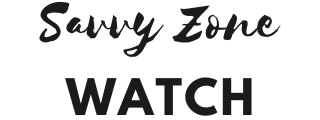

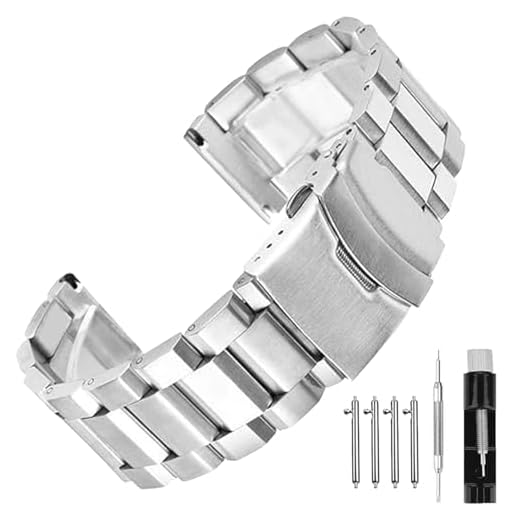

This guide actually made me measure my wrist for the first time 😂
Also the SINAIKE band looks slick — anyone used it on a colored dial? Curious how it reads.
Glad it got you measuring, Chloe! SINAIKE bands pair nicely with colored dials — stainless mesh can tone down a loud color and give balance.
I put a SINAIKE on a blue-dial watch and it made the blue pop while keeping things classy.
Yes! Blue dial + mesh looks modern. Go for it.
Constructive nitpick: the article could use a quick cheat-sheet table listing recommended case diameters by wrist circumference. The prose is great but I like quick reference.
+1. A printable wrist-measure template would be clutch for people ordering online.
Good idea — we’ve noted that and will consider adding a visual cheat-sheet or quick reference table in the next update. Thanks for the suggestion!
Really enjoyed the ‘Measuring Your Wrist’ section — I always guessed my size. Ended up ordering a Casio MQ24 after reading this and it fits like a glove on my 6
Thanks for sharing, Emma — glad the measuring tips helped! The MQ24 is a great lightweight pick for smaller wrists.
Do you find the MQ24 too flat? I worry about thin cases sitting weirdly under long sleeve cuffs.
Nice! MQ24 is a classic. If you ever want something a hair dressier, try swapping to a brown leather strap.
Honestly, the ‘small wrists = less style options’ worry is overblown. There’s stuff for everyone.
I wear a Timex Expedition Scout 40mm and it doesn’t swam on me. Depends on lug-to-lug and how you wear it.
Also, Indiglo is life. 👌
Totally — fit is about proportions more than raw diameter. Timex’s 40mm can work for many because of slim lugs.
Indiglo saved me on a camping trip. Highly recommend for night visibility.
Right, and field watches often have smaller lug-to-lug despite bigger diameters. The Timex is a good example.
Quick tip: measure across the top of your wrist where the watch will sit. For me, a 38mm with short lugs is comfier than a 36mm with long lugs. Case geometry > number in the description. Also, the Casio MQ24 is a lifesaver for cheap-looks-good.
Totally. I printed out diameter templates once and it saved me from a return.
Exactly — where it sits on the wrist matters. Thanks for sharing the MQ24 callout — it’s a classic budget winner.
I’m torn between the Timex Expedition Scout and something dressier like the TWOPTION for everyday work-to-weekend use. I need something that can survive hikes but not embarrass me at meetings.
Any hybrid suggestions? Also: is 40mm borderline for small wrists in a casual-office environment?
Timex Expedition is a strong hybrid choice — rugged enough for hikes but understated enough for casual meetings. 40mm can work depending on lug-to-lug and case thickness; try a 38mm if you’re uncertain.
You can always swap to a leather strap for meetings to dress it up. Quick-release bands make that painless.
Quick question about the GOLDEN HOUR Ultra-Thin Digital Sports Watch — I’m into gadgets but have pretty skinny wrists.
– Is ‘ultra-thin’ actually wearable for small wrists or just marketing?
– Will the multifunction screen look too big? I’m torn between that and the Timex Expedition.
Also: I love the part about case shapes — the cushion vs. round comparison cleared up so much for me.
(also hi admin, ty for the guide!)
Good points, Priya. “Ultra-thin” helps with thickness but not width/lug-to-lug — measure those. The GOLDEN HOUR can read large on narrow wrists because of its display area, but if you like sportier looks it can work. Timex Expedition Scout is a safer all-rounder for small-to-medium wrists.
Paper circle trick is genius lol. Also look at lug width — if it’s wide, it’ll sit more ‘present’ on your wrist even if thin.
I own the GOLDEN HOUR — it’s comfy and light, but yea it reads big on my sister’s tiny wrist. Try to visualize the dial size by cutting a paper circle to the case diameter and placing it on your wrist.
If you’re into features, GOLDEN HOUR packs a punch. Battery life has been solid for me. But for stealth and style, Timex is more subtle.
Mesh straps vs leather vs nato — which do you guys prefer for all-day comfort? I’m allergic to some metals so I’ve been nervous about stainless mesh.
Also, can mesh make a watch look bigger or smaller? The guide touched on materials but I’d love a deep dive. Thanks!
I rotate: leather for office, NATO for casual, mesh when I want a slightly dressier metal look. Mesh can pinch hair though, heads up.
Great question. Mesh can make a watch look a bit more substantial because it fills the wrist visually, while leather can make it appear sleeker. For metal allergies, try coated or PVD finishes, or leather/NATO alternatives.
Mesh hugs the wrist and disperses weight — great for heavier cases. If you’re allergic, look at silicone or leather with hypoallergenic backing.
Thanks everyone! The pinching is my main fear — I’ll try a leather-first approach and test a SINAIKE quick-release for swapping.
I swapped my stock strap for a SINAIKE quick-release 20mm stainless steel band on a smaller watch and it made the piece feel more integrated.
Won’t magically shrink a large case, but helps balance proportions and makes changing styles painless.
Great tip, Mark. Quick-release bands are underrated for experimentation — they let you try different looks without committing.
Agreed. I put a mesh band on my 36mm watch and it suddenly looked dressier and better balanced.
Long post incoming — been wearing watches for 15 years and small-wrist folks, listen up:
1) Measure properly: use a soft tape and note your wrist circumference where your watch will sit. Measure snug and loose.
2) Remember lug-to-lug: a 38mm with long lugs can feel bigger than a 42mm with short lugs.
3) Consider strap width: a 20mm strap on a 36mm case will look chunkier than a 18mm on the same case. SINAIKE’s quick-release 20mm is great for experimentation but don’t assume width=fit.
4) Materials matter: mesh/steel add visual weight; leather and nylon are slimming. For all-day comfort, thinner cases and curved lugs hug the wrist better.
5) Try the Timex Expedition if you want utility without a huge presence; for dress, TWOPTION or an MQ24 are safe classic bets.
TL;DR: It’s about harmony, not just diameter. The article does a solid job covering this — maybe add more pics comparing the same watches on different wrists.
Saved this post for reference! Especially the lug-to-lug reminder.
That strap-width point is golden. I was making mistakes until I realized the visual ratio matters.
Fantastic summary, Victor — thank you. We’ll look into adding comparative photos as you suggested.
Appreciate the detail — your advice convinced me to measure for real this time.
Low-key defending the Casio MDV-106 here — yeah it’s big, but as a weekend statement it’s awesome. If you like dive style but have small wrists, wear it on a thinner strap and it reads less chunky. Opinions?
I can’t do oversize, but honestly sometimes the overhang look is intentional — depends on the vibe you want.
Agree with the statement watch approach. I kept mine on a thin leather strap for a season and it was wearable.
Good point — styling and strap choice can change perception a lot. The MDV-106 can work as a ‘statement’ even on smaller wrists if you lean into that look.
Great article, but a quick PSA: lug-to-lug is everything. The Casio MDV-106 is beautiful but it overhangs on my 6.2″ wrist — looks like I’m wearing a salad plate.
If you have small wrists, check lug-to-lug before buying. Don’t just go by diameter.
Totally agree — lug-to-lug often gets overlooked. We added a note to the guide about comparing lug-to-lug to your wrist length (not just diameter).
Yep. I trimmed a rubber strap and it helped visually, but if the lugs overhang there’s no fixing that. MDV-106 is best for medium+ wrists.
Shoutout to the TWOPTION Women’s Dainty Leather — bought it after this guide and it’s perfect for petite wrists. Thin case, small lug-to-lug, and the leather is soft right away. ❤️
I’ve had a similar dainty watch and the strap started creasing after a few months, but a proper leather conditioner helped.
Happy to hear it fits well, Olivia! The TWOPTION watch is exactly the kind of recommendation we intended for dressy small-wrist options.
Pics or it didn’t happen 😂 jk but yeah post a wrist-shot if you’re comfy — helps others visualize.
Thanks for the tips — strap is holding up so far, no crazy creasing yet. I’ll snap a wrist pic tomorrow.
Looks cute in pics. How’s the strap durability so far?
Budget vs durability question: is the GOLDEN HOUR worth it compared to the Casio MQ24? I’m looking for something tough for daily wear but under $50.
Both are budget-friendly but different use cases: MQ24 is simple, classic, and very reliable for daily wear; GOLDEN HOUR offers sports functions and is more feature-packed. For pure durability on a budget, MQ24 often wins due to its minimalist design.
I bought a MQ24 for a backup travel watch — survived a beach trip no problem. For heavy activity I’d lean GOLDEN HOUR though.
Thanks all — leaning MQ24 for simplicity.
GOLDEN HOUR has more features but more that can break. MQ24 is bulletproof and cheap to replace.
If you’re hiking and need something rugged, Timex Expedition is also a great middle ground.